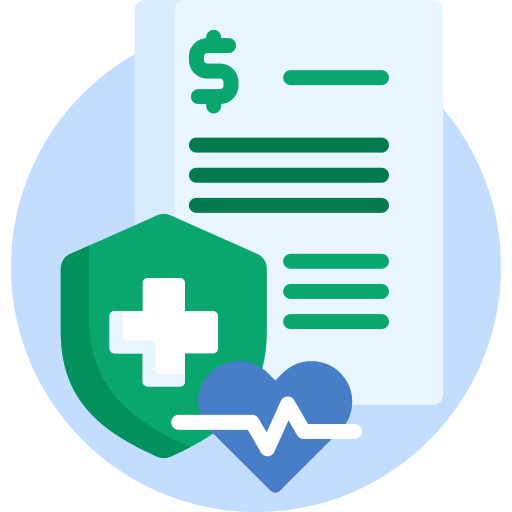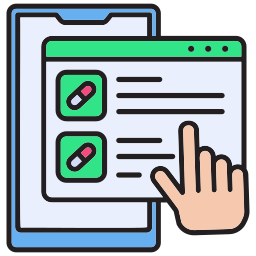Healthy living is a modern and prevalent trend, significantly boosting the market for fitness-tracking apps like Google Fit & Apple Health. These apps are designed to track and analyze users' daily activity information, notifying them about their activity targets and achievements.
Companies can use this data to offer excellent mobile solutions that empower customers to do more with their fitness data.
It's no surprise that Google and Apple are actively competing in this space. Whether through wearables, the Internet of Things, mobile applications, or mobile OS.
Google introduced its healthcare platform, Google Fit, which utilizes advanced APIs to track fitness activities accurately. With iOS 8, Apple launched the HealthKit framework to complement its health apps.
Both platforms aim to provide comprehensive fitness tracking and health insights, making them integral to the growing fitness app market.
What is Google Fit?
Google Fit is a detailed fitness tracking platform developed by Google to help users lead healthier lives. Utilizing advanced APIs, Google Fit tracks various fitness activities, such as walking, running, and cycling, to provide detailed insights into users' daily activity levels.
The app integrates seamlessly with various wearables and other fitness devices, making monitoring progress and setting achievable fitness goals easy.
With Google Fit, users can track their heart rate, log workouts, and receive personalized health tips to enhance their overall well-being.
Whether you're a fitness enthusiast or just starting your health journey, Google Fit offers the tools and motivation to stay active and healthy.
Google Fit Components
- The Fitness Store - A central repository that stores data from a variety of devices and apps. The fitness store is a cloud service that is available to clients.
- The Sensor Framework - A set of high-level representations that make it easy to work with the fitness store. You use these representations with the Google Fit APIs.
- Permission and User Controls - A set of authorization scopes to request user permission to work with health and wellness data.
- Google Fit API - Android and REST APIs to access the fitness store. You can create apps that support Google Fit on multiple platforms and devices, such as Android, iOS, and Web apps.
How Does Google Fit Work?
The Google Fitness Store Flow focuses on using a mobile device as the central point for integrating data from device sensors and wearables via Google Fit APIs to provide comprehensive fitness tracking.

Types Of APIs
The Google Fit APIs for Android are part of Google Play services and are supported in Android 2.3 (API level 9) and higher. Google Fit on Android consists of these APIs:

- History API - The History API enables your app to perform bulk operations on the fitness store: reading, inserting, updating, and deleting historical health and wellness data.
- Sensor API - The Sensors API provides access to raw sensor data streams from sensors available on the Android device and sensors available in companion devices, such as wearables.
- Recording API - The Recording API provides automated health and wellness data storage using subscriptions. Google Fit stores health and wellness data of the specified types in the background and persists in-app subscriptions.
- Session API - The Sessions API provides functionality to store health and wellness data with session metadata. Sessions represent a time interval during which users perform a fitness activity.
- Goals API - The Goals API provides a way to track users’ goals for their health and fitness progress.
Steps For Implementation of Google Fit API
Integrating the Google Fit API into your app allows you to access user health data, but it requires some setup. Here's a breakdown of the key steps:
1) Prepare Your Development Environment:
- Google Account: You'll need a Google account to access the Google Cloud Platform and its resources.
- Google Play services: Ensure your app can interact with Google Fit by including Google Play services in your project.
- OAuth 2.0 Client ID: This unique identifier allows your app to request access to user data securely. Obtain one from the Google API Console.
- Project Setup: Create a project on the Google Cloud Platform and enable the Google Fit API for
2) Adding the Google Fit Library:
- Include the Google Fit client library in your project. This library provides the tools to interact with the Google Fit API.
3) Requesting User Permissions:
- Ask users for permission to access their health data through Google Fit. This is typically done during app installation or first use.
4) Creating an API Client:
- Use the Google Fit API client builder to create a client object for your app. This object handles communication with the Google Fit API.
5) Data Access and Management:
- Define the specific data types you want to access (e.g., steps, heart rate).
- Use the API client to read or write data to Google Fit.
- Implement mechanisms for handling user consent changes and data access revocations.
Additional Tips:
- Refer to the official Google Fit documentation for detailed instructions and code samples: https://developers.google.com/fit/android/get-started
- Consider using libraries or frameworks that simplify Google Fit integration for your chosen development platform.
- Always prioritize user privacy and security. Ensure you only access data with explicit user consent and handle it responsibly.
These instructions will show you how to utilize the Google Fit API to improve the functionality and user experience of your app by adding useful health data.

Android Project Setup
1) Install the latest version of Android Studio.
2) In the Welcome to Android Studio window, click Create New Project.
3) If you have a project already opened, select File > New > New Project.
4) In the Select Project Template window, select Empty Activity and click Next.
5) In the Configure your project window, complete the following:
- Enter “My First App” in the Name field.
- Enter “com.example.myfirstapp” in the Package name field.
- If you’d like to place the project in a different folder, change its Save location.
- Select either Java or Kotlin from the Language drop-down menu.
- Select the lowest version of Android your app will support in the Minimum SDK field.
- If your app requires legacy library support, mark it as Use legacy Android. Support libraries checkbox.
Leave the other options as they are.
- Click Finish
Connect to the fitness service
- Get the necessary OAuth authentication.
- Get the required Android permissions.
- Create an API client and use API’s.
What Is HealthKit?
HealthKit, developed by Apple, is a robust framework designed to act as a central repository for health and fitness data on the iPhone and Apple Watch. This framework allows users to consolidate data from various health and fitness apps into one secure location, offering a comprehensive view of their overall health and activity levels.
Integrating with other apps and devices, HealthKit makes it easier for users to track their progress, set achievable health goals, and manage their wellness more effectively. This integration ensures that users have all their health information in one place, making monitoring and improving their health and fitness simple over time. HealthKit's secure and streamlined approach empowers users to confidently take control of their health.
How Does It Work?
HealthKit is a central repository aggregating health and fitness data from the iPhone, Apple Watch, and various health apps. Here’s how it works:
- Data Collection:
- HealthKit gathers data from built-in iPhone and Apple Watch sensors, such as steps taken, heart rate, and burned calories. It also collects information from third-party health and fitness apps.
- Central Repository:
- All the collected data is stored in a secure, central location within the Health app on the iPhone. This repository allows users to view a comprehensive health and fitness information summary in one place.
- User Permissions:
- HealthKit requires explicit user permission to share data between different apps and devices to ensure privacy and security. Users can control which apps can access their health data, ensuring their information is shared only with trusted sources.
- Data Integration:
- HealthKit integrates data from various sources, providing a holistic view of the user's health. This integration allows users to track their progress, set fitness goals, and receive personalized health insights based on comprehensive data.
- App and Device Interaction:
- HealthKit-enabled apps can read and write data to the HealthKit repository. For example, a nutrition app can log meals, while a fitness app can track workouts. Both can contribute to the user's overall health data in the Health app.
- Insights and Goals:
- HealthKit uses the aggregated data to offer valuable insights and recommendations. Users can set and monitor fitness goals, track progress over time, and receive notifications and tips to maintain or improve their health.
HealthKit helps customers manage their health more efficiently by combining health and fitness data from numerous sources, resulting in a clear and comprehensive picture of their overall health.
Accessing & Storing Health & Fitness Data
There are three main ways to access data from the HealthKit Store to the fitness service.
- Direct method call
- Queries
- Long-running queries
Saving Data to HealthKit
- Create & Share Healthkit samples
- Save data
How to Implement Apple HealthKit?
- Enable HealthKit for your app into Xcode
- Ensure that HealthKit is available on the current device
- Create your app’s HealthKit Store
- Request user permissions to read and share data
- Access and share data with your store using predefined classes and Data Types provided by the HealthKit Store.
Minbowser Expertise in Wearable Integration
Transform your health and fitness app with Mindbowser's Google Fit and HealthKit framework development expertise.
Our team of specialists will guide you through seamless healthcare API integration, ensuring your app delivers precise and valuable insights to users.
Use modern health data frameworks to improve your app's functionality and user experience. Get in touch with Mindbowser today and start building a healthier future!
- What is HealthKit?
HealthKit is a framework offered by Apple that centralizes health and fitness data on your iPhone and Apple Watch. With your permission, apps can access and contribute data to this secure repository, creating a more holistic view of your well-being. Think of it as a central hub for your health information. Imagine data from your workouts, sleep tracker, and even weight management app all feeding into one place. This allows you to see how different aspects of your health interrelate.
- How does HealthKit work?
HealthKit provides a central repository for health and fitness data on iOS devices. Developers can integrate their apps with HealthKit to read and write data to this repository. Users can control which apps can access their health data, ensuring privacy and security. This integration allows for a more comprehensive view of a user's health information, as data from multiple sources can be combined and analyzed within the Health app.
- What are the initial steps to implement Google Fit on Android?
Begin by setting up your development environment in Android Studio. Install the Google Fit SDK and add the necessary dependencies to your project. Then, configure the Google API Console to get the OAuth 2.0 credentials, allowing your app to access Google Fit APIs.
- How do you integrate HealthKit into an iOS application?
Start by enabling the HealthKit capability in your Xcode project. Import the HealthKit framework and request user permissions to access health data. Implement code to read and write data to the HealthKit store, ensuring you handle user data securely and comply with Apple’s guidelines.
- What are the common challenges faced during integrating Google Fit and HealthKit, and how can they be addressed?
Common challenges include handling user permissions, ensuring data privacy, and managing data synchronization. Address these by thoroughly testing your app, providing clear permission prompts, implementing robust data security measures, and using background processing to synchronize data across devices.

Pravin Uttarwar, CTO of Mindbowser
Pravin has 16+ years of experience in the tech industry. A high-energy individual who loves to use out-of-the-box thinking to solve problems. He not only brings technical expertise to the table but also wears an entrepreneurial hat – benefiting any project with cost savings and adding more value to business strategy.
HealthConnect CoPilot enabled us to access real-time patient health data through integration with Apple HealthKit, enhancing care delivery while maintaining HIPAA compliance. This led to personalized care and improved outcomes for patients.

AI-enhanced Obstetrics Clinical Decision Support Platform
HealthConnect CoPilot's integration with Epic's Hyperspace has transformed our workflow. Automated post-delivery examinations and HL7 protocol use ensure accurate updates to Epic. Their expertise empowers informed decision-making in childbirth

Top Provider for Customized Healthcare Solutions
HealthConnect CoPilot's helped us to integrate with leading tracking devices such as Apple Watches and Fitbit. This integration enables effortless syncing of health data, providing users with real-time insights displayed directly on our flagship products: smart mirrors and digital calendars.

A Provider of Customizable Display Solutions



